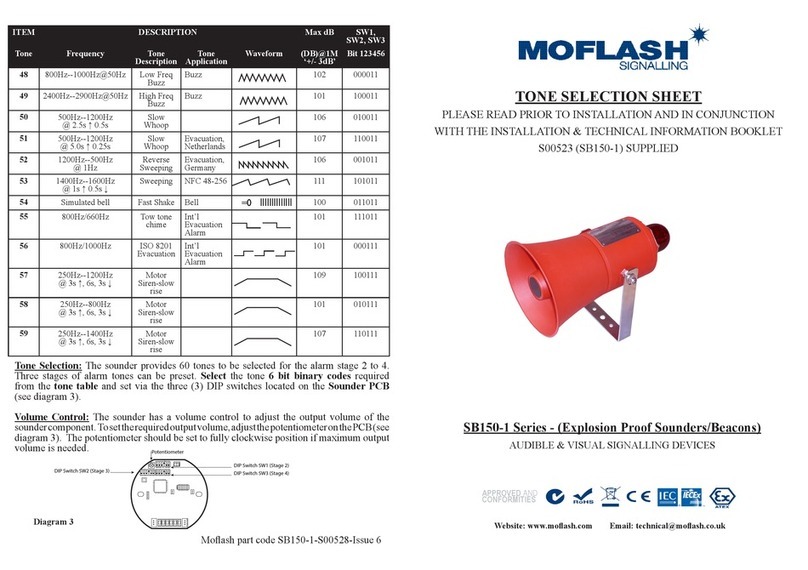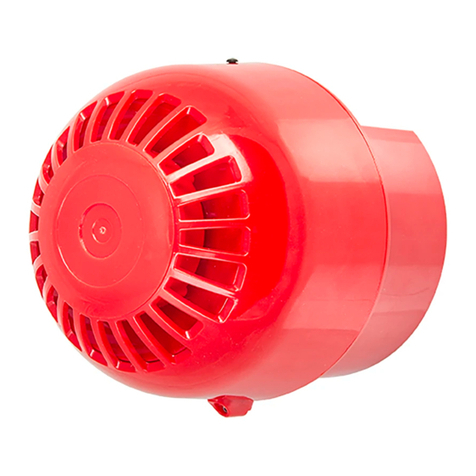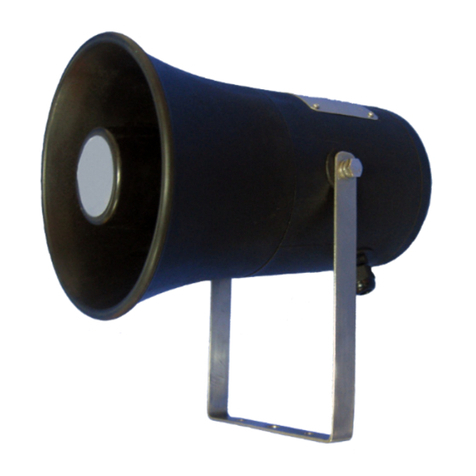
1.0 Introduction
The Moash Intrinsically Safe Sounder product (IS-S-02) is ATEX and
IECEx certied. The Sounder is approved to be installed in Groups I (Min-
ing) and Group II (above ground), Zones 0, 1 or 2 with gas groups IIA, IIB,
IIC and Zones 20, 21 and 22 for dust groups IIIC and carries a tempera-
ture classication of T6. The Sounder comprises of a 2 stage alarm and
has a total of 32 selectable alarm tones via a DIP switch which is set
upon installation. When powered via a suitable Galvanic Isolator or Zener
Barrier the Sounder will draw a constant 33mA. The Sounder has diode
reverse polarity protection and is also End of Line resistor compatible.
2.0 Intrinsically Safe Labelling
The product will have an individual serial number printed onto the head
base plate. An example of the Sounder label is shown below.
These products have been tested by notied body Element Materials Tech-
nology who are UKAS accredited to BS EN ISO/IEC 17025:2005 and ISO/IEC
17065:2012. It is also a Notied Body for the ATEX Directive, UKEX/UKCA, an
IECEx Certication Body and an IECEx Testing Laboratory.
The sufx X at the end of the certicate numbers indicate that there are special
clauses added for safe use of these units.
3.0 Types of Approval and Standards Applied
The Moash IS Sounder product has been approved to the following standards:
IEC 60079-0:2011 / EN 60079-0:2018
IEC 60079-11:2011 / EN 60079-11:2012
EN 54-3 (Approval with BRE Global)
2 S00608 Issue 8



































